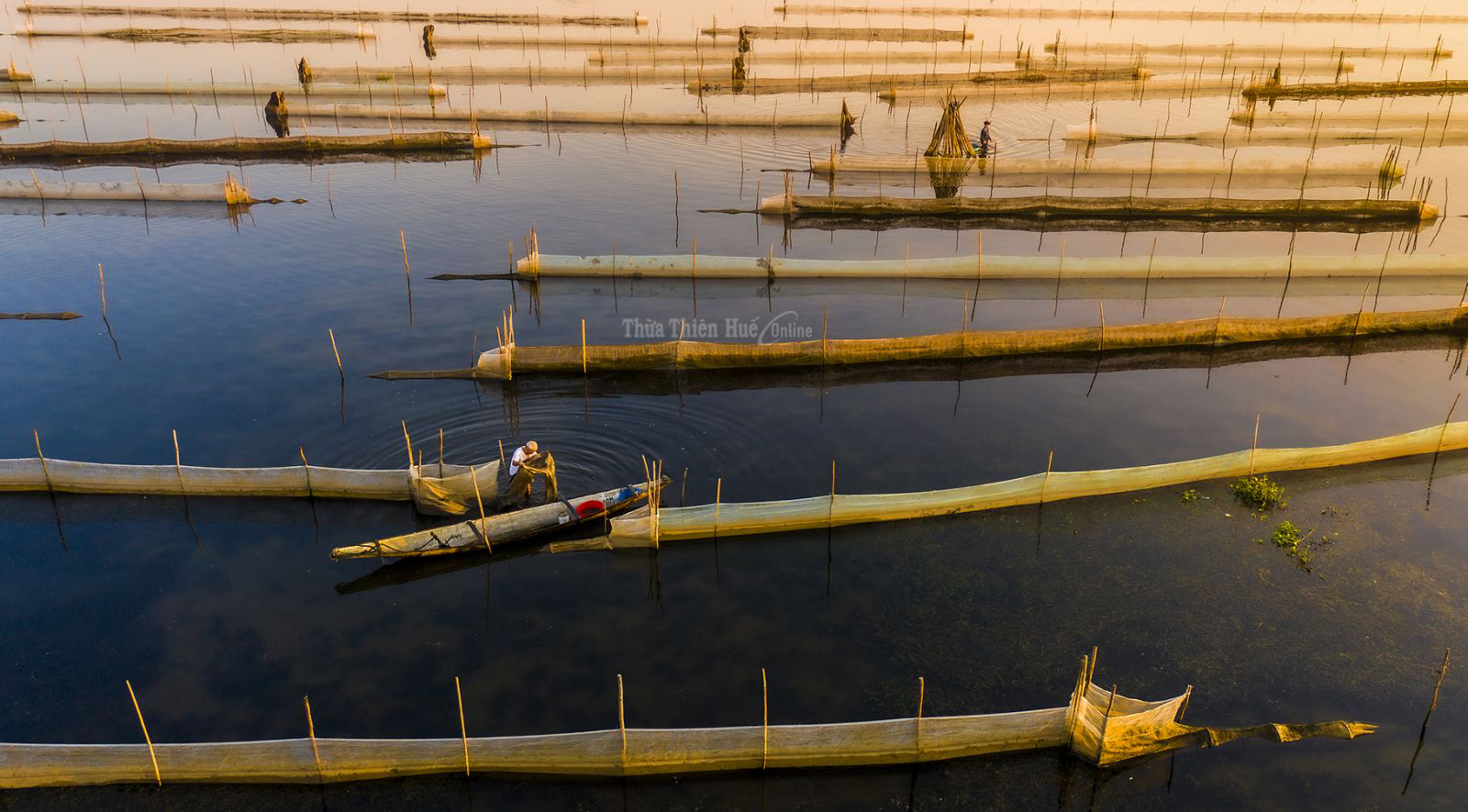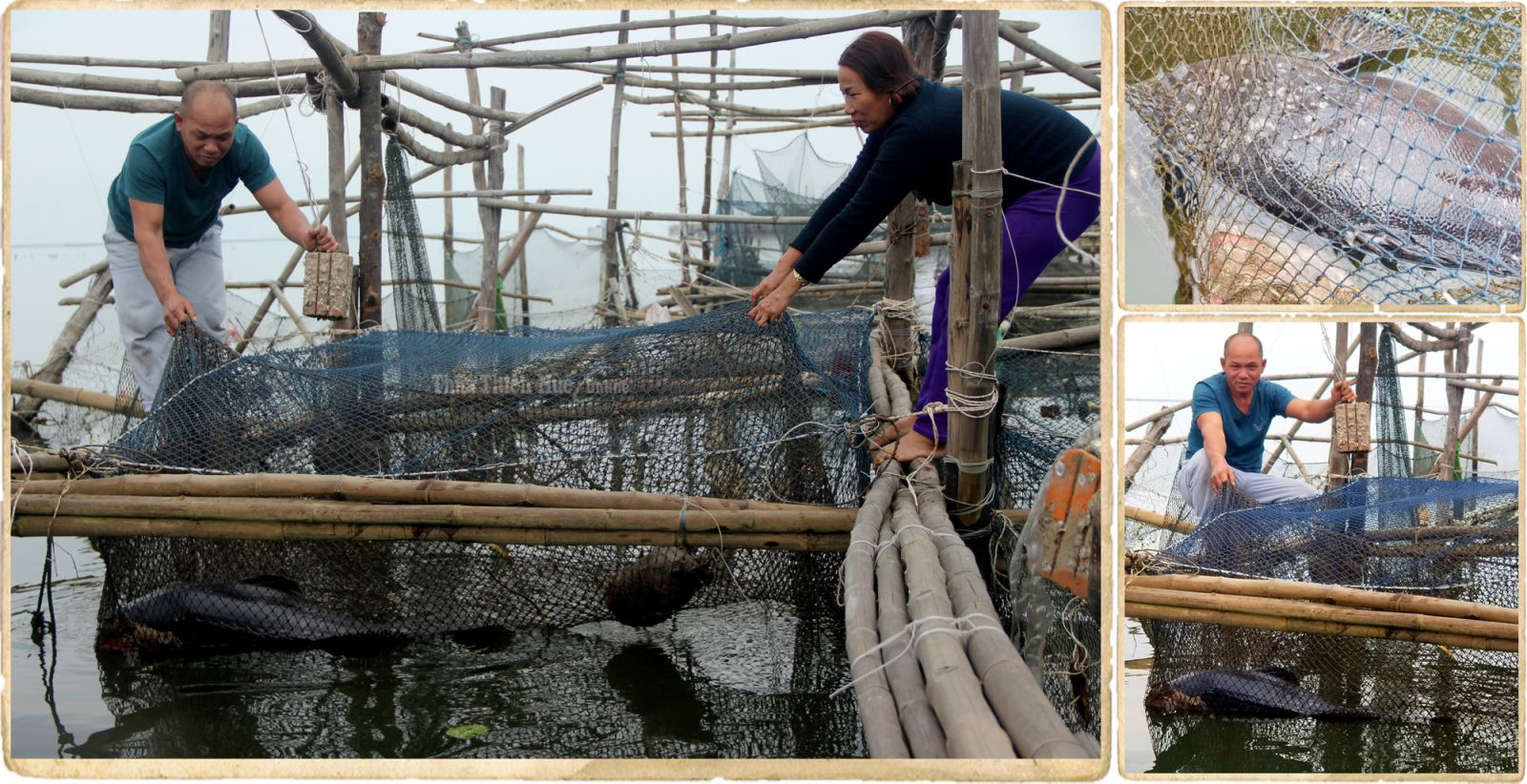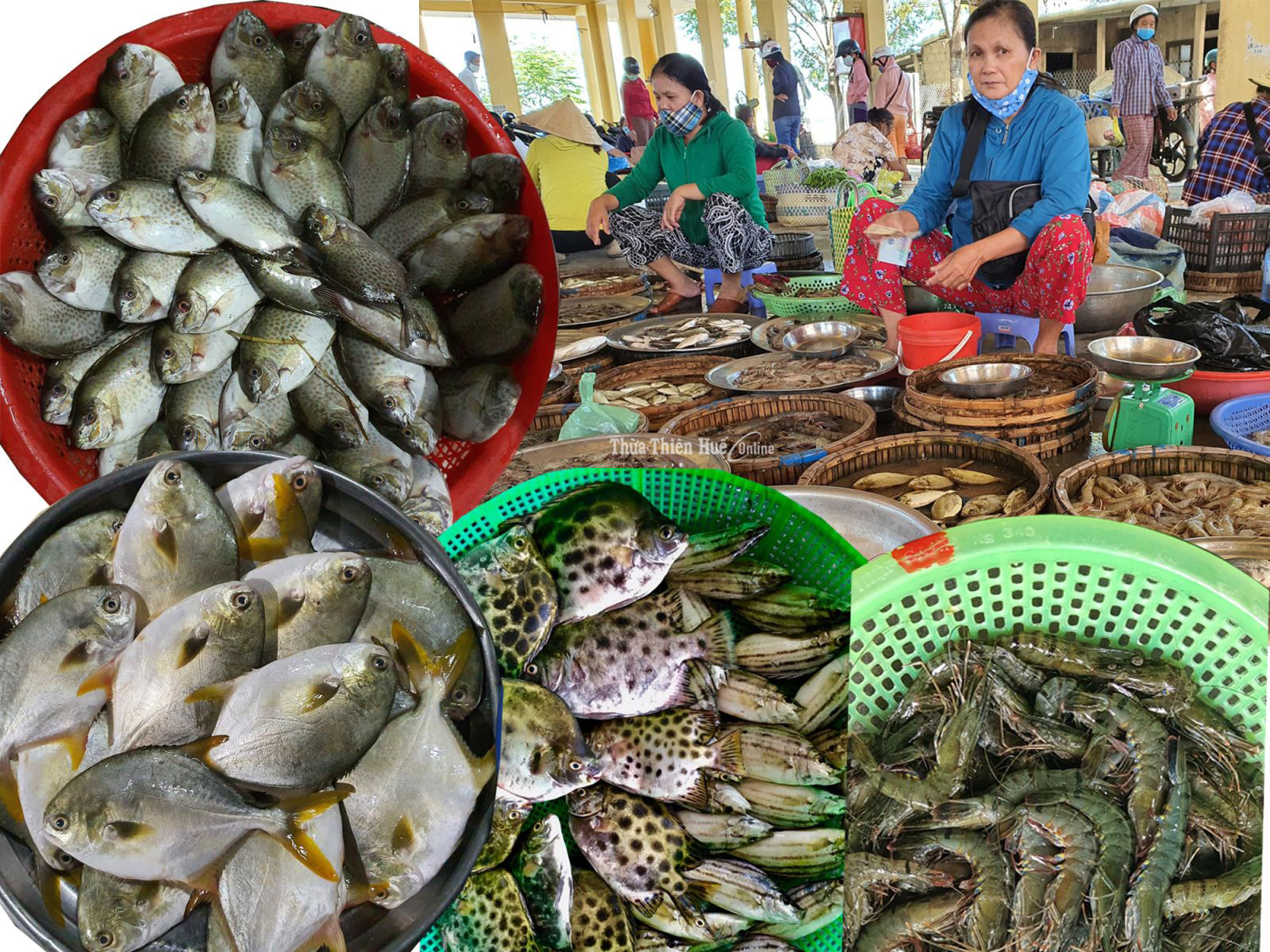Located at the end of the Perfume River, near Thuan An Estuary, Ru Cha is known as the place between wind and water in the rainy and stormy season. This is one of the few remaining rare primeval mangrove forests in the country. Referring to Ru Cha, many people remember Mr. Nguyen Ngoc Dap (Thuan Hoa Village, Huong Phong Commune, Huong Tra Town), who devoted his youth to Ru Cha.
Forty years ago, Mr. Dap asked the local authorities for a plot of land right in the middle of Ru Cha, both for living and for aquaculture and fishing. Living in Ru Cha, Dap realizes that, during the flooding season, this place is a breeding ground for many aquatic species. It is a habitat for migratory birds.
.jpg)
Ru Cha provides the habitat for many valuable aquatic and seaweed species
Living in Ru Cha, Mr. Dap also suffered pain when the forest was cut down.From the original 5 hectares, at one point, the area of the forest fell by half. Many rare species of birds and aquatic products also disappear. “Unable to remind, dissuade some people from destroying the forest, I had to report to the local authorities. The bird hunters also came to my house to intimidate and clamor for revenge. I was anxious about this; however, they finally knew my heart and realized: “The forest exists; the village will survive. The forest is destroyed; the village will fall into decline.”, Mr. Dap opened up.

On the first days of preserving the forest, Mr. Dap volunteered to be a "ranger". Initially, each year, he was "paid" 5 baskets of rice. "Protecting the forest, protecting the environment and aquatic resources is protecting livelihood for ourselves and the village". Thinking so, later on, Mr. Dap volunteered to preserve the forest and did not receive the payment of rice from the commune.
.jpg)
The area of Ru Cha is protected and expanded, creating a source of livelihood for the people around the zone.
Rowing with us in the immense green of Ru Cha, Mr. Dap talked about the days of silently planting each seedling on the plots of forest cut down. His hands bled many times to replant each tree. The severe weather and natural disasters made the trees planted by Mr. Dap hard to survive. One tree died; he kept sowing another in the hope that the forest would revive.
Cha trees gradually grew thanks to Mr. Dap’s cultivating hands. In the seasons when the flowers, fruits fall, the strictly- protected Ru Cha grows and recovers bit by bit.

The forest is preserved - that is to say, there is the environment for aquatic species to multiply. The people not only have the opportunities to catch fish but also rely on it to develop the jobs related to the lagoon.
Secretary of the Party Committee, Chairman of Huong Phong Commune People's Committee, Mr. Tran Viet Chuc said Ru Cha is protected, and the source of fish and shrimp is proliferating. Thanks to fishing combined with aquaculture, many households around Ru Cha have settled down. A lot of households have become well-off. On average, every year, the whole commune earns VND 20 billion from fishing and aquaculture. Thanks to the lagoon, the fishermen's children have schooling and pass examinations. It was also thanks to the lagoon economy that the locality achieved the new rural standards after many years of efforts,

Ru Cha is a typical story about a mangrove wetland preserved and developed by local people. In order to protect the long-term resources and biodiversity of the Tam Giang-Cau Hai Wetland, over the years, 25 aquatic resources protection zones were established by the province.
Here, the core zones are strictly protected; fishing by destructive means is prohibited. The aquatic resources are also supplemented and regenerated.

Collecting nò sáo (stake nets) on Tam Giang Lagoon
For generations, the people in the hamlets of Ha Cong, Ngu My Thanh, Cu Lac... in Quang Loi Commune (Quang Dien District) have chosen the land along the lagoon to settle. Countless people have been attached to this area despite ups and downs, upheavals, storms, floods...
Mr. Phan Van Ty, Head of Ngu My Thanh Hamlet said the people’s life in Ngu My Thanh in particular and in the hamlets of Ha Cong, Cu Lac ... in general has long since depended on fishing and aquaculture. Since the establishment of the protection zones, the people’s awareness has been raised.
With an area of nearly 367 hectares, Ghanh Lang Village Dam is one of the aquatic resources protection zone established many years ago in Cau Hai Lagoon of Phu Loc District with 58 hectares of the strictly-protected core zone. This is the area of earning livelihood for more than 105 households in Loc Binh Commune and fishermen in the neighboring areas. Every day, at 3 am, the floating market along the lagoon is crowded with shrimp and fish.
Taking advantage of the lagoon water surface, the people in Loc Binh (Phu Loc) raise about 500 cages of fish of all kinds, including specialty fish with large weight. “Only in this water area can the saffron groupers of 50-70kg per fish be raised. Every time they harvest, about a dozen muscular men support them, and the whole village comes to see. The restaurants from other provinces or gourmets come and buy specialty fish at high prices,” an old fisherman in this area proudly said.

Great-weight saffron grouper raised in Loc Binh (Phu Loc)
Across Loc Binh Lagoon lies Vinh Hien Commune with two aquatic resources protection zones of Ha Na and Chim Dune of more than 226 ha. The ecological recovery subzone of 687.52 ha wide was in the orientation of expanding the scope and area of wetland conservation in the period of 2023-2025.
In the story of a job life with the old fishermen wholeheartedly faithful to the lagoon, the lagoon is a place to protect and nurture one generation after another, succeeding the aquaculture job.
Mr. Le Thiet, a member of Vinh Hien Fisheries Association Branch, said that Ha Na has a plentiful source of seaweed, and Chim Islet is a shelter and breeding ground of aquatic species, offering great benefits to fishermen. The collection of fries with nghề đáy (bottom net fishery) near the sea mouth alone provides an income of several tens of millions of VND per season. This is also a source of regenerating aquatic resources for the surrounding areas.
.jpg)
Ha Na – Chim Islet has become a place of livelihood for the people in Vinh Hien and neighboring communes
“Although the Chim Islet water surface area is managed by Vinh Hien Commune in terms of administrative boundaries, the people in the areas along the lagoon (Loc Dien, Loc Tri, Giang Hai, Loc Binh ...) come here to exploit the resources with the folk concept of “the lagoon under common ownership". Mr. Ho Suu, Head of the Office of Vinh Hien Commune People's Committee humorously said that the "common heritage" that the Creator bestowed upon over 30% of Thua Thien Hue's population - the owner of the treasure - is the largest wetland in Southeast Asia named Tam Giang-Cau Hai.

The lagoon specialty market with species of spade fish, orange spotted spinefoot, dorab, tiger prawn…
In terms of efficiency since the establishment of aquatic resources protection zones, Deputy Director of Provincial Fisheries Sub-department, Mr. Vo Giang, said that the establishment of protection zones is inevitable in the face of the requirement of preserving aquatic resources, ecosystem, large wetland biodiversity in Thua Thien Hue. Since its establishment, the aquatic resources protection zones are quite strictly protected. The resources are proliferating. The fishermen's life and income are stable.
.jpg)